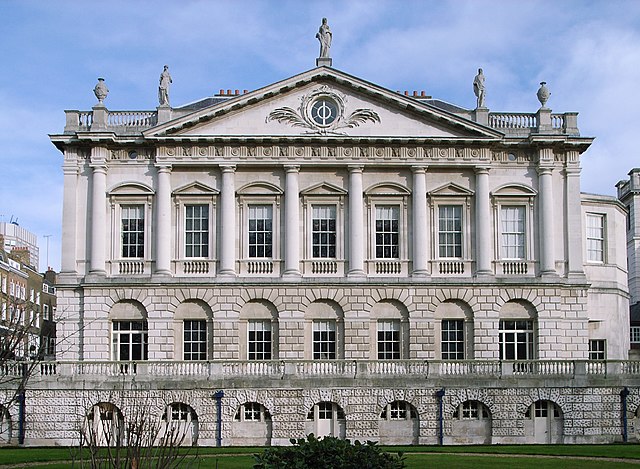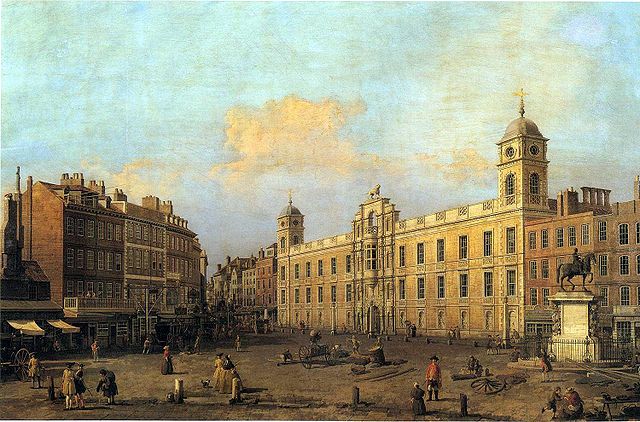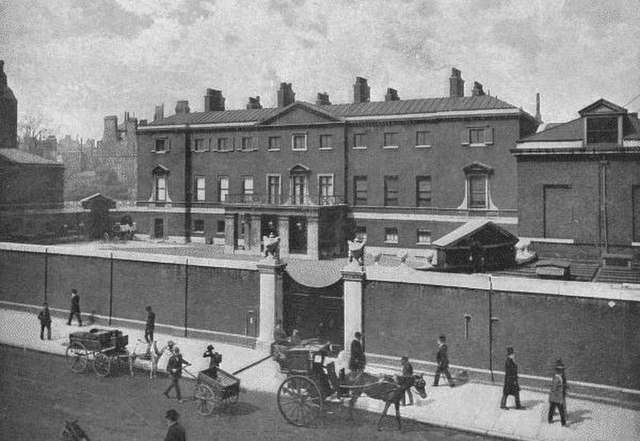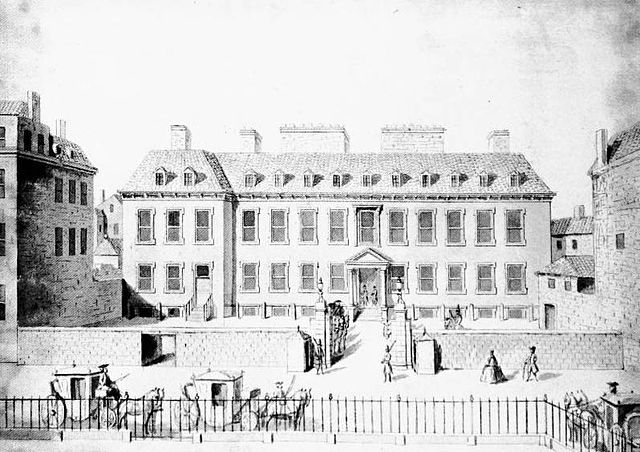The Savoy Palace, considered the grandest nobleman's townhouse of medieval London, was the residence of prince John of Gaunt until it was destroyed during rioting in the Peasants' Revolt of 1381. The palace was on the site of an estate given to Peter II, Count of Savoy, in the mid-13th century, which in the following century came to be controlled by Gaunt's family. It was situated between the Strand and the River Thames. The Tudor-era Savoy Chapel was located on the former estate property and carried on the name; today, the name is carried on by the Savoy Theatre and Savoy Hotel, again both located on the former estate. In the locality of the palace, the administration of law was by a special jurisdiction, separate from the rest of the county of Middlesex, known as the Liberty of the Savoy. French monarch John II of France died here after an illness.
1848 engraving by Charles Thurston Thompson
The Savoy Hospital in 1650, drawn by Wenceslaus Hollar
View of the Savoy in 1736, from Vetusta Monumenta.
Ruin of the main Barracks (formerly Hospital) building in the late 18th century, following the fire.
Townhouse (Great Britain)
In British usage, the term townhouse originally referred to the opulent town or city residence of a member of the nobility or gentry, as opposed to their country seat, generally known as a country house or, colloquially, for the larger ones, stately home. The grandest of the London townhouses were stand-alone buildings, but many were terraced buildings.
Spencer House in St James's, London, one of the last surviving true townhouses still owned by the noble family that built it, the Spencers, although it is now generally leased out commercially. The corresponding country house is Althorp in Northamptonshire.
The Strand front of Northumberland House in 1752 by Canaletto, the townhouse of the Dukes of Northumberland. Note the "Percy Lion" atop the central facade.
Devonshire House, Piccadilly, in 1896
Leicester House on Leicester Fields, 1748








